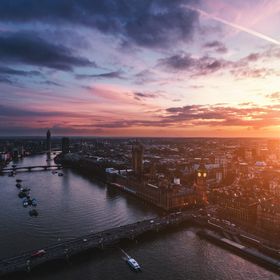
bminear
FollowViews
186
Likes
Awards
Great Shot
Peer Award
Top Choice
Outstanding Creativity
Superb Composition
Superior Skill
Absolute Masterpiece
Magnificent Capture
Genius
Same photographer See allBehind The Lens
Behind The Lens
Location
This photo was shot in Ludington, Michigan. Some friends and I decided to do a day trip up north to catch some fall colors, and while shooting the sunset, I checked to see what the best areas for shooting stars would be best on our way home. When we arrived to see that the milky way was positioning directly overtop the lighthouse, we were overjoyed and immediately began snapping all that we could. We could not have planned it any better.Time
We arrived around 11pm and this shot was taken around midnight. It was extremely cold and the wind coming in off the water was bone chilling, but we were having too much fun to notice that much.Lighting
With the positioning of the milky way, my goal was to frame up a composition that looked like the light from the lighthouse was lighting up the stars in the sky.Equipment
This was shot on a Fujifilm X-T1 with a Rokinon 12mm f/2 lens and all held steady by a Vanguard VEO 235AB tripod.Inspiration
After a full day of shooting awesome locations, we wanted to end our trip with a bang. When I realized that this area was going to be great for minimal light pollution, it was an instant stop. Rarely do you get such an interesting subject interacting with the milky way in this fashion.Editing
Not too much really. Within Adobe Camera RAW i did some selective contrast adjustments to make the milky way pop, and then finished it all off in photoshop by giving it a more natural saturation.In my camera bag
I always carry 2 cameras with me with my favorite focal lengths on each to minimize lens swapping. Camera #1 is a Fujifilm X-Pro2 with a 16mm f/1.4 and Camera #2 is a Fujifilm X-T2 with a 56mm f/1.2. Other lenses that I carry are a 10-24f/4 IS, 50-140 f/2.8 IS, and those cover just about everything that I need to shoot.Feedback
DO your research. We totally lucked into the positioning of the milky way, but with today's technology it would have been super easy to plan. Apps like PhotoPils for iOS allow you to use augmented reality to view where the milky way will be in the sky on any given date and time. Use these tools to your advantage when you find a great spot that you want to shot stars. Also reference a dark sky map to see what areas are going to minimize the light pollution, this will absolutely make or break your photograph. Lastly, know your gear. I know exactly how my gear is going to perform in any situation and that is helpful when you are in the dark in freezing temperatures. You don't want to have to think too hard. Know your tools so that you can just do it. Also for a bonus, bring a headlamp for handsfree light.

























